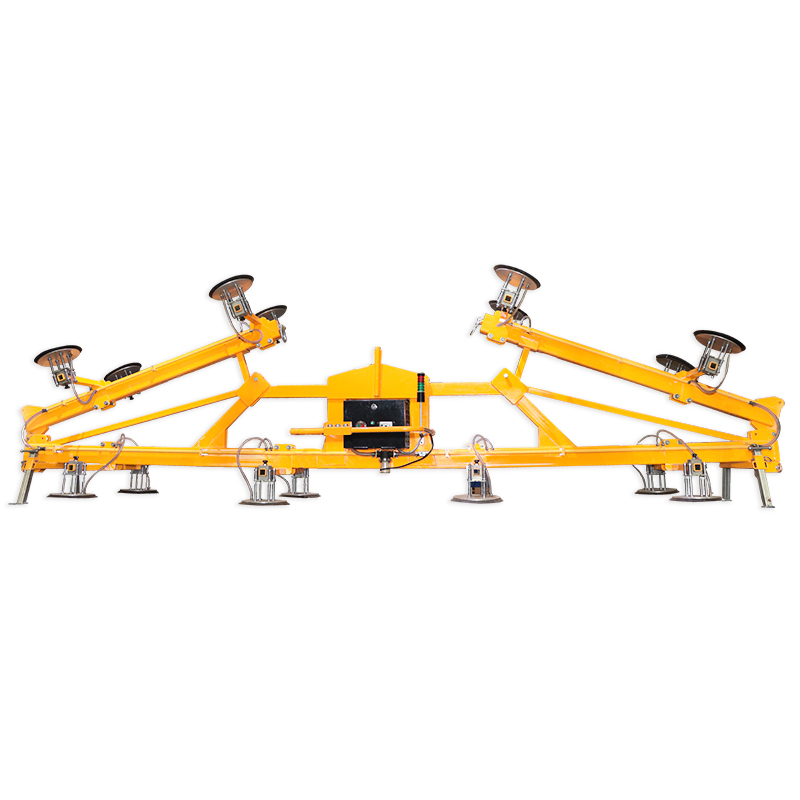Modern construction and industrial facilities increasingly rely on advanced material handling solutions to boost productivity, ensure workplace safety, and control costs. Among these, vacuum lifters have become essential equipment for transporting slabs, glass, sheet metal, and other heavy materials. However, like all machinery, they present operational challenges. This guide explores the most common issues encountered with vacuum lifters in material handling—and expert-backed strategies to fix them, drawing on years of industry experience and best practices.

Table of Contents
ToggleUnderstanding Material Handling and the Role of Vacuum Lifters
Material handling is the science and practice of safely and efficiently moving, storing, and controlling materials on construction sites, warehouses, and manufacturing plants. This broad field covers everything from lifting equipment for construction, material storage solutions, and carts to automated conveyors, forklifts for construction, and specialized vacuum lifting devices. To learn more about the fundamentals, visit What Is Material Handling?.
Vacuum lifters are a critical part of modern material handling equipment, capable of moving non-porous and semi-porous materials safely and with minimal labor. Used alongside other equipment such as Aardwolf Slab Lifters, Jib Cranes, and more, they help streamline job site logistics and reduce manual effort.
Common Issues in Material Handling with Vacuum Lifters
1. Loss of Suction or Vacuum Leaks
Symptoms: Materials slip or drop unexpectedly, or the vacuum gauge fails to reach or maintain the required pressure.
Causes: Worn or damaged suction pads, cracked hoses, improper pad placement, or leaking fittings.
Fixes:
- Regularly inspect and replace worn pads and hoses.
- Ensure that all fittings are tight and free from debris.
- Check for surface contamination (dust, oil, moisture) and clean both the material and the suction pad before use.
- Follow the manufacturer’s maintenance schedule for Vacuum Lifters.
2. Equipment Overload
Symptoms: The vacuum lifter cannot lift or hold the intended load; safety alarms may activate.
Causes: Attempting to handle materials that exceed the lifter’s rated capacity, or using inappropriate pad configuration.
Fixes:
- Verify the weight and surface type of materials against the vacuum lifter’s specifications.
- Use the appropriate lifting pads and ensure full contact with the load.
- Never exceed the rated capacity—refer to certified guidelines for Material-handling Equipment.
3. Inconsistent or Intermittent Performance
Symptoms: The lifter works sporadically, loses suction during lifts, or fails to operate under certain conditions.
Causes: Electrical or pneumatic supply issues, poorly maintained filters, or fluctuating air supply.
Fixes:
- Inspect and clean air filters regularly.
- Ensure reliable and sufficient power/air supply.
- Schedule routine inspections with a qualified technician.
- Use only approved material handling equipment.
4. Pad Wear and Damage
Symptoms: Cracks, hardening, or deformation in the suction pad; loss of grip.
Causes: Exposure to harsh chemicals, UV, or mechanical damage from sharp edges and debris.
Fixes:
- Store pads in a cool, dry place away from chemicals and sunlight.
- Replace damaged pads promptly and only use manufacturer-approved replacements.
5. Operator Error and Insufficient Training
Symptoms: Misuse of controls, improper placement, or unsafe lifting practices.
Causes: Lack of training or unclear operating procedures.
Fixes:
- Train all operators using the vacuum lifter, referencing detailed user manuals and best practices.
- Establish and enforce standard operating procedures.
- Only qualified staff should handle Which of the Following Is a Motorized Material Handling Device and vacuum lifters.
6. Environmental Conditions
Symptoms: Lifter fails to perform in extreme temperatures, high humidity, or on contaminated surfaces.
Causes: Environmental factors can reduce suction effectiveness or damage sensitive components.
Fixes:
- Use vacuum lifters rated for the specific working environment.
- Always prepare the work surface, removing dust, oil, and moisture.
- Schedule more frequent inspections in harsh or variable climates.
7. Lack of Preventive Maintenance
Symptoms: Increased frequency of breakdowns, higher repair costs, and unscheduled downtime.
Causes: Skipping routine inspections, delaying parts replacement, or ignoring warning signs.
Fixes:
- Implement a regular maintenance and inspection program, logging all issues and repairs.
- Keep records for compliance and warranty purposes.
- Partner with a reliable service provider for Material handling Equipment.
Additional Tips for Improved Material Handling Efficiency
- Integrate vacuum lifters with forklifts for construction, hoists, and conveyors in construction to create seamless material flows.
- Use specialized attachments for handling different materials, such as Aardwolf Slab Lifters for stone and glass.
- Reduce labor costs and risk of injury by training staff on safe operation and equipment limitations.
- For a deeper understanding, see What Does Material Handling Mean?
Conclusion: Professional Material Handling for Maximum Value
Professional, consistent maintenance, operator training, and the right choice of Vacuum Lifters and accessories are key to minimizing downtime and maximizing the value of your investment in material handling equipment. By addressing common issues proactively, you not only extend the service life of your equipment but also improve safety, reduce material waste, and boost overall site productivity.
For more detailed guides, visit the resource links above and always follow your manufacturer’s official maintenance recommendations. This article is intended for informational purposes only and should not replace professional advice from a certified technician or the equipment manufacturer.
















Please log in to leave a comment.